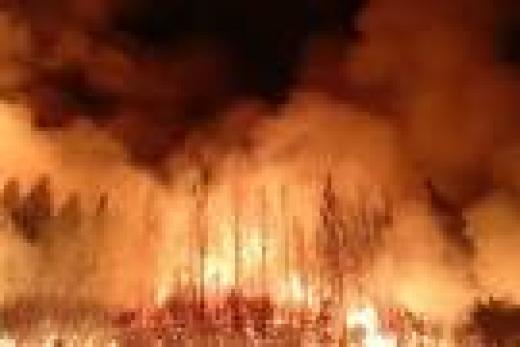Fire Suppresion or Forest Restoration?
A recent study by the University of Oregon reports that fire suppresion costs have grown to exceed one billion dollars annualy. Would it not be better to spend these monies on forest restoration that would immunize the forest from major fire. At present Forest Service projects are directed towards ecological restoration and reduction of fire potential. This is a noble goal but their resources are limited and only 3% of the nations forest are treated in any year. Even with restoration the forest requires 5, 10 and 20 year intervention to sustain the protection gains. Obviously one can never get ahead in overall protection with the current rate of progress. .
The Nature Conservancy reports that investing in proactive forest management activities can save up to three times the cost of future fires, reduce high-severity fire by up to 75 percent, and bring added benefits for people, water, and wildlife. “Recent megafires in California and the West have destroyed lives and property, degraded water quality, damaged wildlife habitat, and cost taxpayers hundreds of millions of dollars,” said David Edelson, Sierra Nevada Project Director with The Nature Conservancy. “This study shows that, by investing now in Sierra forests, we can reduce risks, safeguard water quality, and recoup up to three times our initial investment while increasing the health and resilience of our forests.” (From the Sierra Sun Times, Mariposa, CA)
The Mokelumne Watershed Avoided Cost Analysis examines the costs and benefits of reducing the risk of high-severity forest fires through proactive techniques like thinning and controlled burns. Set in the central Sierra Nevada, just north of last year’s destructive Rim Fire, scientists modeled likely future wildfires with and without proactive fuel treatments. The results indicate that investing in healthy forests can significantly reduce the size and intensity of fires and save millions of dollars in structure loss, carbon released, and improved firefighting safety and costs.
Is the government able to increase restoration costs now so as to reduce fire suppression costs later? Besides the fire costs there are attendant losses to forest, wildlife and personal and commercial property and infrastructure. A large segment of fire costs goes to local agencies and contractors in fightinf fore. These same people can be used to augment Forest Service resources to accomplish restoration.
One regional Forestor suggests that the government is attacking the problem. “Our ongoing goal is to increase the pace and scale of our restoration work and this study strongly supports that,” said Randy Moore, U.S. Forest Service Pacific Southwest Regional Forester. “Our current pace of restoration work needs to be accelerated to mitigate threats and disturbances such as wildfires, insects, diseases and climate change impacts. The goal is to engage in projects that restore at least 500,000 acres per year. Many types of projects help us reach our restoration goals including mechanical vegetation treatments, prescribed fire, and managing wildfire for resource benefits.”


